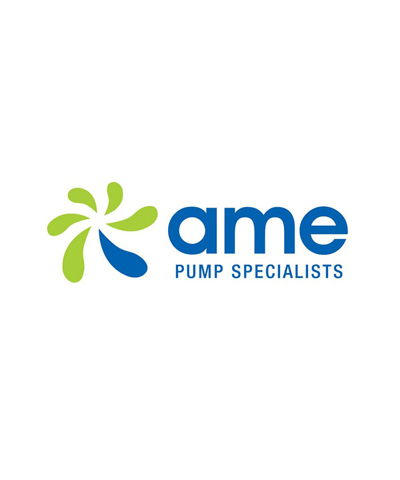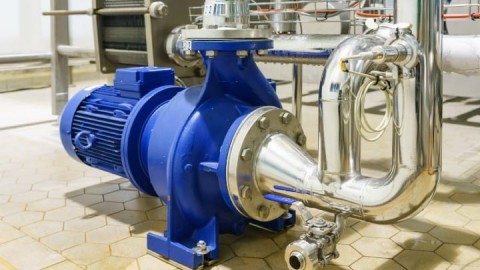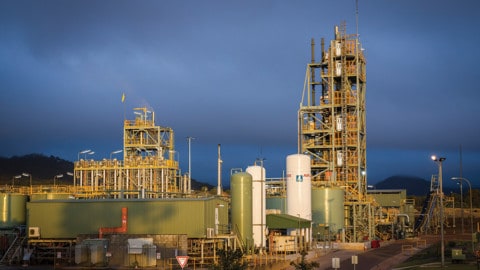 Westmalle Abbey belongs to the Cistercian Order, commonly referred to as ‘the Trappists’, after the Normandy abbey of La Trappe. A monk’s life is primarily a life of prayer, but it is also a life in community and a life of work. The main source of income for Westmalle is brewing beer. Though they still help in the process, the monks leave the main work to professionals. Pump Engineer went along to have a look at the pumps they are using and talk to Rudi Wuyts, Head of Maintenance.
Westmalle Abbey belongs to the Cistercian Order, commonly referred to as ‘the Trappists’, after the Normandy abbey of La Trappe. A monk’s life is primarily a life of prayer, but it is also a life in community and a life of work. The main source of income for Westmalle is brewing beer. Though they still help in the process, the monks leave the main work to professionals. Pump Engineer went along to have a look at the pumps they are using and talk to Rudi Wuyts, Head of Maintenance.
When was the brewery set up?
I think it was set up in 1836 by the monks, though there were no real records kept from that time. In the Benedictine tradition, monks traditionally eat and drink the local food of the region wherever they live. The Trappist monks came originally from France where they drink wine, but here in Westmalle in Belgium the local drink is beer, so they started brewing beer. Their rule of ‘Ora et Labora’ (prayer and work) meant that they recognized the value of work in their lives. Originally they did not sell the beer, they just brewed it for their own use. But soon the people of the region wanted to buy it, and so a source of income was also developed and things started rolling. Approximately 80{87a03eb4327cd2ba79570dbcca4066c6d479b8f7279bafdb318e7183d82771cf} is sold in Flanders and almost 20{87a03eb4327cd2ba79570dbcca4066c6d479b8f7279bafdb318e7183d82771cf} in Holland. In many other countries you can buy the beer, but only in very small amounts. The fact that a beer is brewed in an abbey and the tradition around that, makes it a desirable product.
What do you do in an average week?
That is unpredictable! We employ about 42-45 people and the maintenance crew is responsible for all installations in the brewery. Part of the work is planned, but we also do some engineering e.g., preparing for new installations, looking for a new brew house or maybe a new fermentation cellar. Otherwise, when something breaks down my six colleagues and I repair it, and we try to prevent unwanted stops. I spend a lot of time behind my desk too, doing computer work.
 Is the brewing is done in batches?
Is the brewing is done in batches?
The brewing itself is a boiling system so it does not need to be cleaned every time between batches. We normally make three brews a day, starting at five o’clock in the morning and we finish at 19.30 or 20.30 in the evening. After the third brew there is usually a cleaning programme for one of the sections: so one day we clean the boiling kettles another day we clean the cooling system or the maize filter. We have a programme to clean everything within a week but this applies only to the hot system, where the danger of infection is low because of the high temperatures involved in the process there. The pumps in our boiling system are boiler circulating pumps made by the Belgian company Deplechin.
How many pumps in the brewery overall?
I never counted them exactly but I would estimate about 50 to 60 pumps. The basic design for about 80{87a03eb4327cd2ba79570dbcca4066c6d479b8f7279bafdb318e7183d82771cf} of the pumps is centrifugal, though we have all kinds of other pumps such as positive displacement pumps, rotary lobe mono-pumps called worm pumps, small dosing membrane pumps, vacuum pumps etc. We have three vacuum pumps in the brewery; one for the de-gassing of the yeast. We harvest the yeast from the fermentation cellar in manual tanks but there is a lot of CO2 in the yeast, so it needs de-gassing before it is pumped into a vessel. We also use vacuum pumps for the bottling installation. Every bottle is vacuumed twice and filled with CO2 before bottling to prevent air getting into the beer, otherwise it oxidizes very quickly and then it becomes less tasty. We also have an unusual ship-propeller type pump used in the bottle-cleaning machine for label extraction. The impeller in the pump is as big as the propeller of a ship and intended to create a very strong fluid flow to get the labels off the bottles for re-use. We handle 45,000 bottles an hour. This is not the biggest pump we have, as the motor is something like 3 KW. The pump itself is big but it is not a large motor. Our biggest pump is a backwash pump to clean a filter, with a capacity of 200 cubic meters per hour, used to clean some membranes in a filter machine. The smallest pump we have is a tiny hose pump for use in the laboratory. The hygienic design on all pumps is very important especially for everything in the cold process.
After the brew house, the next stage is a cold process to eliminate germs and infections. In this cold stage, the pump is cleaned after each batch, so the sanitary design is very important with these pumps. The most dangerous part of the process is the cooling down after the brew house boiling to 20C until the end of the fermentation process. Everything has to be very clean. All pumps are cleaned in place (CIP), we don’t use steam in place (SIP) anymore, with the exception of the propagation unit for a new yeast culture every year. That is steamed in place as it has to be very sterile, to prevent the mixture of old and new yeast.
Do you have any planned down-times?
Not in the brew house, as the demand for our beer is too high. This means that we have to brew all year round. So everything that has to be repaired is done in the weekends, but in the bottling plant we have a total stop every year for a week.
How much pump maintenance to keep the place going?
This depends on the pump. Some are not repaired for ten years. We have some wells 70 meters deep and use SP pumps for pumping the water out of the soil.
We put the first Grundfos pump in 1993 and they were only replaced in 2008, so that is 15 years of use without problems. We only took them out because we needed bigger pumps, not because they had failed in any way.
So we bought newer bigger Grundfos pumps. New pumps are foreseen with monitoring equipment but back then there was no such thing yet those pumps did the job all the same. Predictive monitoring is used on very important machines like a separator that turns 4000 rotations per minute for the centrifugal effect in handling beer. These pumps are monitored with vibration sensors, but not the normal daily use pumps.
For the most critical pumps we have one back-up pump. Mostly we do our own maintenance, but when we have to stop the bottling plant for a week, we may have too many repairs to do and we may contract others in to help, usually from the suppliers of the machines, so we may have the original equipment supplier OEM people coming to help as they have the best knowledge of their own equipment. Grundfos mostly covers cold and hot water. For the beer and the cold stage processing, it is mostly Alfa Laval. For the hot stage we have Deplechin, KSB pumps are used for the cleaning systems of bottle cleaners and wastewater, with Flygt underwater pumps for wastewater. As for vacuum pumps we use Sterling pumps. Every pump has a lifetime, so you have to decide at a certain moment whether we are going to revamp the pump or are we going to buy a new one. When old parts are still available and the pump is reliable and would work for another 10 years if serviced, we will choose that option. From time to time the manufacturer will say that a pump is not supported anymore, that they have a new type of pump, then I will decide whether it is wise to keep the old pump in operation. I look at the yearly costs of maintaining that pump as against the cost of a new pump, where you probably have no maintenance for five or six years. We have a Real Software maintenance package for tracing costs called Rimsis, but we don’t use that very often as most pumps are part of a machine or process, so after many years you either buy a new machine or install a new process, you don’t change parts of the process or machines. A bottling plant is there for twenty years and after that you replace it with a new one. We are now looking to build a new brew house and a new fermentations cellar in the next five or ten years due to the need for renewal. We can make approximately 125,000 hectoliters a year. We can do that now, but it means using the full 100{87a03eb4327cd2ba79570dbcca4066c6d479b8f7279bafdb318e7183d82771cf} capacity of the brewery with no time for maintenance. A little spare capacity would be very welcome. So we are looking to plan a new brew house and yeast cellar to make it possible to have more down-time for maintenance.
What are the most important pump lessons learned over the years for you personally?
A pump has to be well calculated and well designed for the future you want for it. When you put the wrong pump in the wrong place, it is always a problem. You have to carefully look to buy the right type and capacity of the pump. Getting a pump that is too big is as bad as getting one that is too small, so we always work in dialogue with the supplier. I am not a pump specialist, I do not calculate pumps myself, and so I always rely on the expertise of the supplier. I just give the pressure, temperature and volume figures to him and ask him to select the right pump for that function. I would like to see us triple the capacity and produce the same volume, so that we have plenty of time for maintenance work.
You need more time to keep everything up to the state of the art. It is the same for non-abbey breweries, there is too much production and too little time to attend to the machinery involved.
What is like working for monks?
I cannot say really as I have been working here for thirty years and this was my first job!
This article first appeared in Pump Engineer and is used with permission. Visit www.pumpengineer.net for more.




















